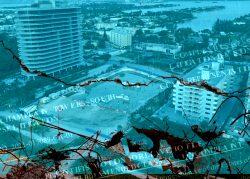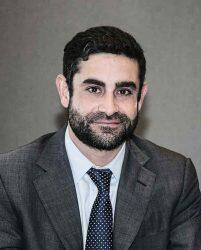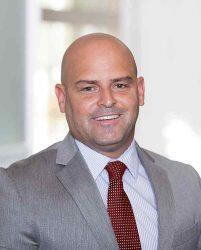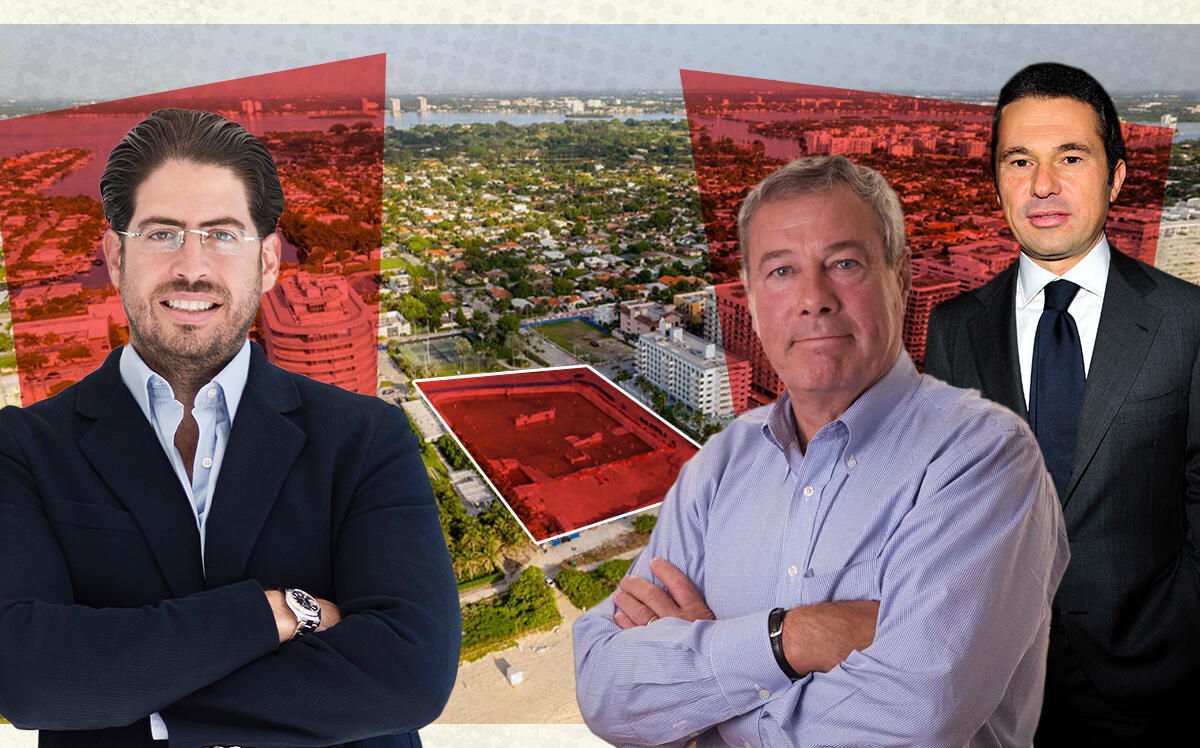The $1 billion-plus Surfside settlement marks a milestone in the lawsuit over the deadly condominium collapse. It also reveals the role of real estate insurance — and is a harbinger of premium hikes that could reverberate across the industry.
The insurance carriers for 31 entities are contributing toward the $1.02 billion total disbursement. All who settled have denied any wrongdoing and liability.
While condo and project construction premiums were steadily rising before Champlain Towers South collapsed last summer, killing 98 people, the cave-in sent condo association insurance costs skyrocketing, and could push construction insurance premiums even higher, experts told The Real Deal.
The settlement, which breaks down each contribution, is a clear record of developers and construction companies’ exposure in a deadly calamity.
“Insurers are looking and going, ‘My God, if we touch something that has this type of issue, we are potentially going to have to pay out big money,’” said Keith Carroll, principal at Jensen Beach-based Rick Carroll Insurance Agency. “As a result, their appetite has waned and those left offering coverage, in a lot of cases, they are taking away coverage.”
Read more




Mark Friedlander
Carriers still willing to insure will face less competition, so they will be unafraid to increase premiums. In the past six to nine months, many master condo associations saw premiums double, and unit owners saw them rise an average of 30 to 40 percent, and as much as 50 percent, according to Mark Friedlander, spokesperson for the Insurance Information Institute, a New York-based industry association.
Developer Henry Torres, who is president of the board at the Merrick Manor condo project he built in Coral Gables, said the association’s insurance rate went up 75 percent this year, instead of an anticipated 25 percent. And he expects a sting, as well, when he takes out a construction insurance policy for a project he will start in eight months.

Henry Torres
“We are all going to be paying for the Champlain Towers through our insurance companies for a while,” said Torres, who founded and leads The Astor Companies.
Developers opting to build oceanfront projects next to aging buildings will be hardest hit for insurance premiums, experts say.
Harder to insure
A development team led by David Martin’s Coconut Grove-based Terra developed Eighty Seven Park next to Champlain Towers South. It allegedly defaulted to the cheapest “yet most disruptive” methods, despite the development inspector’s warnings of “damaging vibrations” to nearby buildings, according to the main lawsuit over the collapse.
The insurer for 8701 Collins Development, the development entity, will pay $28 million in the settlement, while the insurer for the building’s condo association will pay $29 million. The project’s general contractor, John Moriarty & Associates of Florida, settled for $157 million through its insurer. The general and excess liability construction insurance program, which covered three Eighty Seven Park entities, as well as John Moriarty and Bizzi & Partners, a co-developer not named in the suit, settled for $84 million.
The biggest contribution to the settlement is $517.5 million from the insurer for Securitas Security Services USA, which employed the security guards that monitored Champlain visitors but was not named in the suit.
The contribution size does not indicate potential culpability, but is a reflection of the amount of insurance coverage, said Friedlander of the Insurance Information Institute.
Securitas’ contribution “is not saying, ‘We are more than 50 percent responsible,” he said. “This organization is international, has very deep pockets and that’s who the attorneys go after. Deep pockets equals very strong insurance coverage.”
Securitas, part of a Stockholm, Sweden-based Securitas AB, in a statement said its “participation in the settlement does not reflect responsibility for the collapse of the building or the tragic loss of life.” Rather, “the legal and insurance claims environment surrounding this matter compelled” its carriers’ participation in the settlement.
“Insurance companies just don’t volunteer to pay $517 million for something. They would go out of business if they do that,” Friedlander said. “The fact that it is an international organization, they could be sued for $1 billion themselves.”

Jesse Dean-Kluger
Jesse Dean-Kluger, a real estate and litigation attorney in Miami, reiterated that no conclusions could be drawn from a settlement. “At some point, it’s just adjusters in a room doing math,” he said.
“Our clients’ insurers made a business decision to contribute to the overall settlement of this litigation in order to resolve claims against them and avoid the time, expense, and inconvenience of litigation,” Michael Thomas, attorney for 8701 Collins, said in a statement. Thomas again denied that the development of Eighty Seven Park caused or contributed to the collapse.
Still, it may not be smooth sailing for Terra, one of Miami’s top developers that has built numerous high-end condo projects, and the rest of the Eighty Seven Park team, when they seek construction insurance in the future, several experts said. A common premium-determining approach is the experience rating or a company’s so-called “loss history.”
“Most likely, all of these organizations will experience significant premium increases going forward as a result of the Surfside settlement, and some may even have difficulty obtaining coverage,” Friedlander said.
Terra is working on other projects with John Moriarty and firms that were part of Eighty Seven Park’s development team, including the Mr. C Residences in Coconut Grove. The settlement’s possible effect on rates is yet to be seen, Thomas said.
John Moriarty declined comment through a spokesperson. Bizzi & Partners did not respond to a request for comment.
Workarounds
Developers already had become accustomed to higher builders risk and contractor-controlled insurance, which has risen an average of 25 percent annually across the U.S., with some policies up 50 to 100 percent, according to the Insurance Information Institute. The hikes have been primarily due to labor and materials cost increases.

Ryan Papy Keyes
Condo insurance also rose prior to the collapse because carriers became averse to covering roofs over five years old, said Ryan Papy, president of Keyes Insurance in Miami. If an association finds roof coverage, it could be as much as 200 percent more expensive.
Adding to the issue is that unlike homeowners insurance, where carriers are regulated by the state, condo and construction insurance largely is provided by “non-admitted” carriers, or those not regulated by the state, Papy said.
Following the Surfside collapse, developers and carriers may seek additional coverage, experts say.
Torres, of The Astor Companies, said that after he saw payouts in the settlement as high as $84 million, he plans to take out an extra $10 million in his builders risk policy, which includes a liability line. Torres and other developers will likely pass the additional cost onto buyers, who are already paying high prices for units.
“We have inflation, and we have insurance killing us,” he said.
The tighter insurance market and costlier premiums also will trickle down to contractors and subcontractors.
“More and more insurance companies that underwrite these contractors who work next to these older buildings, they are exiting the market,” said Gary Reshefsky, president of Boca Raton-based independent insurance agency Century Risk Advisors.
Yet, not everyone is convinced insurance costs are increasing because of the Surfside collapse. Last year was also one of the most expensive years on record for insurance companies because of a handful of global catastrophes, Reshefsky said.
Papy, of Keyes, said this one settlement won’t move the needle on a multibillion-dollar insurance market, but it will prompt more detailed inspections that show structural issues in existing buildings that in years past could have been glossed over. That will turn off insurers from covering older condos.
“That environment is going to be, ‘People could die. I need to look under every nook and cranny,’” Papy said.
Peter Dyga, president and CEO of Associated Builders and Contractors’ East Florida chapter, agrees that rates likely won’t rise because of the collapse settlement.
“This is exactly what insurance is designed for: the one-off event, the catastrophes,” Dyga said, adding that “abuses” of the system, like unlicensed contractors doing shoddy work or distorted claims being filed, have a greater impact on rising rates.
Dyga said it is more likely that insurers may require contractors and developers of new projects to do more testing and more frequent testing, such as vibration monitoring and testing core samples during construction.
“You’ll pay higher premiums if you can’t do X, Y and Z,” Dyga said. “Let’s look at hurricanes for example. If you can prove that the envelope of your building is solid, then your insurance premiums might be mitigated a little bit. The same could happen to the building industry as a result.”
Attorney Daniel Gielchinsky, whose practice includes real estate, expects that contractors and developers will also increasingly opt to use less impactful construction methods than the sheet pile driving used by Eighty Seven Park’s team. Local governments may also begin to mandate certain kinds of testing during construction, such as seismic monitoring, said Gielchinsky, a former two-term Surfside commissioner. He pointed out that nearly every new project on the South Florida coast is being developed next to an older property.
“Driving sheet piling into the ground where you have limerock under the ground is just not the best practice out there,” he said, calling that method “very damaging” and “an old and cheap way of building.”
“We will see more and more developers go in the direction of the least impactful ways of excavating their foundation walls,” Gielchinsky said.
In a special session, the Florida Legislature recently passed insurance and condo reform laws. Among the changes, condo associations will no longer be able to waive reserve requirements, which are used to fund major repairs, and buildings will be required to go through an inspection and recertification process when they turn 30 years old.
Friedlander, of the Insurance Information Institute, said it could take a year to a year and a half for the reforms to stabilize condo association insurance premium hikes and prompt some carriers to re-enter the market.
In the end, it’s a matter of how developers will move forward with waterfront projects, not if they will move forward, said Dean-Kluger, the Miami attorney.
“I don’t know that anything will ever discourage developers in Miami from developing,” he said. “It’s just not the way we work down here.”
